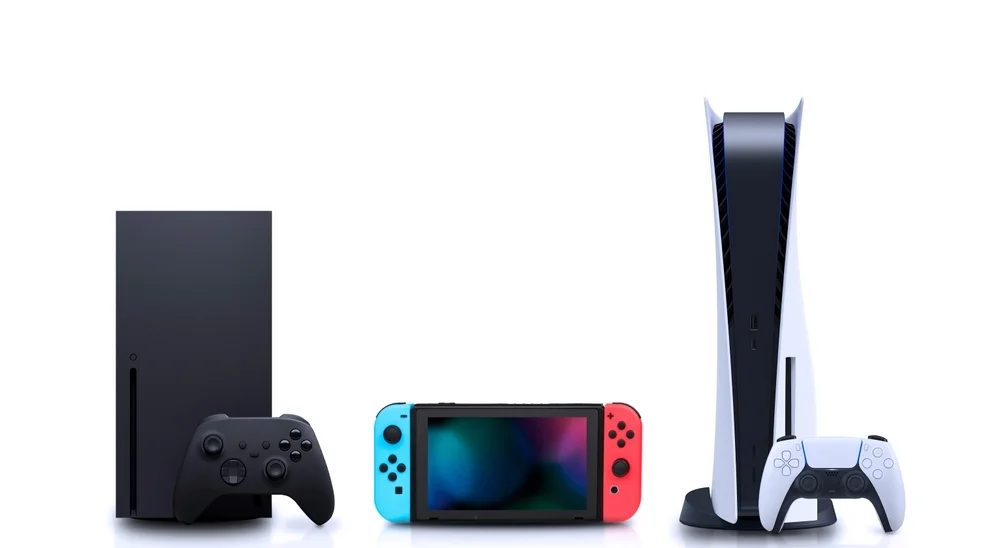Understanding the Latest Trends in Gaming Consoles

Gaming consoles have evolved significantly over the past few decades, with each new generation bringing advanced features, enhanced graphics, and improved gameplay experiences. As we move into 2024, the gaming industry continues to innovate, setting new trends that are reshaping how we play and interact with video games. This article explores the latest trends in gaming consoles, providing insights into what gamers can expect from the current and upcoming consoles.
1. Next-Gen Graphics and Performance
One of the most noticeable trends in the gaming console industry is the continuous push for improved graphics and performance. With the release of consoles like the PlayStation 5 and Xbox Series X, gamers have witnessed a significant leap in graphical fidelity. These consoles support 4K resolution, ray tracing, and high frame rates, offering more realistic and immersive visuals.
a. Ray Tracing
Ray tracing is a rendering technique that simulates how light interacts with objects in a virtual environment. It allows for more accurate reflections, shadows, and lighting effects, making games look more lifelike. While ray tracing has been around in the world of high-end PC gaming, its integration into consoles like the PS5 and Xbox Series X marks a significant step forward for console gaming.
b. Higher Frame Rates
Another trend is the push for higher frame rates. While 30 frames per second (fps) was once the standard for console gaming, modern consoles are now aiming for 60 fps and beyond, with some games even reaching 120 fps. Higher frame rates result in smoother gameplay, especially in fast-paced games like first-person shooters and racing titles.
c. 8K Resolution
While 4K gaming has become the norm, some console manufacturers are already looking ahead to 8K resolution. Although true 8K gaming is still in its infancy and requires a compatible display, consoles like the PS5 have the capability to support 8K output for certain content. This trend highlights the industry’s commitment to pushing the boundaries of visual fidelity.
2. Cloud Gaming and Streaming Services
The rise of cloud gaming is another major trend that’s shaping the future of gaming consoles. Cloud gaming allows players to stream games directly to their devices without the need for physical media or powerful hardware. This trend has the potential to revolutionize the gaming industry by making high-quality games accessible to a broader audience.
a. Accessibility and Convenience
One of the biggest advantages of cloud gaming is its accessibility. Services like Xbox Cloud Gaming (formerly known as Project xCloud) and PlayStation Now allow players to access a vast library of games without the need to download them. This means gamers can play their favourite titles on various devices, including smartphones, tablets, and smart TVs.
b. Subscription-Based Models
Cloud gaming services often operate on a subscription-based model, similar to Netflix or Spotify. For a monthly fee, players can access a wide range of games, including new releases and classic titles. This model provides excellent value for gamers who want to try different games without purchasing each one individually.
c. Cross-Platform Play
Cloud gaming also enables cross-platform play, allowing gamers on different devices to play together. This trend is breaking down the barriers between platforms, fostering a more inclusive and interconnected gaming community. Whether you’re on a console, PC, or mobile device, cloud gaming makes it easier to play with friends and compete against others worldwide.
3. Virtual Reality (VR) and Augmented Reality (AR)
Virtual Reality (VR) and Augmented Reality (AR) are becoming increasingly popular in the gaming world. While VR and AR have been around for a few years, recent advancements in technology are making these experiences more immersive and accessible than ever before.
a. Immersive Experiences
VR gaming offers an unparalleled level of immersion by placing players directly into the game world. With the use of VR headsets like the PlayStation VR2, gamers can explore virtual environments in 360 degrees, interact with objects, and experience games from a first-person perspective. This level of immersion is transforming how we experience video games, making them more engaging and realistic.
b. Augmented Reality Integration
AR, on the other hand, enhances the real world by overlaying digital elements onto the physical environment. While AR gaming is more commonly associated with mobile devices, console manufacturers are beginning to explore its potential. For example, AR features could be integrated into future gaming consoles to create hybrid experiences that blend the real and virtual worlds.
c. VR and AR Accessories
To complement VR and AR gaming, manufacturers are also developing a range of accessories. These include motion controllers, haptic feedback devices, and even treadmills that allow players to walk and run in virtual environments. These accessories enhance the sense of immersion, making VR and AR gaming more interactive and physically engaging.
4. Backward Compatibility
Backward compatibility has become an essential feature for modern gaming consoles. This trend allows players to enjoy games from previous console generations on their new systems, preserving their gaming library and making the transition to new hardware smoother.
a. Preserving Gaming Libraries
For many gamers, the ability to play their existing library of games on a new console is a significant selling point. Consoles like the Xbox Series X and PS5 offer backward compatibility for a vast number of titles from their respective predecessors, ensuring that players can continue to enjoy their favourite games without having to repurchase them.
b. Enhanced Performance for Older Games
Backward compatibility often comes with performance enhancements for older games. For instance, games that originally ran at 30 fps on older consoles can be played at higher frame rates and resolutions on newer hardware. This trend not only preserves gaming history but also enhances it, giving classic titles a new lease of life.
c. Expanding the Gaming Ecosystem
Backward compatibility is also helping to expand the gaming ecosystem by encouraging players to revisit older titles. This trend fosters a sense of continuity and nostalgia, allowing gamers to experience the evolution of gaming first-hand. It also provides an opportunity for younger gamers to explore classic games that they may have missed.
5. Social and Multiplayer Integration
Gaming has always been a social activity, but recent trends are taking multiplayer and social features to new heights. Modern consoles are designed to connect players, enabling them to interact and collaborate in ways that were previously unimaginable.
a. Integrated Social Features
Modern gaming consoles come with built-in social features that allow players to share their gaming experiences with friends and the broader gaming community. These features include video streaming, screenshot sharing, and real-time chat. The PlayStation 5, for example, has a “Create” button on its controller that makes it easy to capture and share gameplay moments.
b. Multiplayer and Online Communities
Multiplayer gaming is more popular than ever, thanks to the seamless integration of online communities. Consoles like the Xbox Series X and PS5 support robust online multiplayer experiences, allowing players to team up or compete with others around the world. The rise of eSports and competitive gaming has also contributed to this trend, with more players participating in online tournaments and events.
c. Cross-Platform Play
Cross-platform play is another trend that’s gaining traction. This feature allows players on different consoles and devices to play together in the same game. It breaks down the barriers between gaming platforms, making it easier for friends to connect and play, regardless of the hardware they own.
6. Customisation and Personalisation
As gaming becomes more personal, there’s a growing demand for customisation and personalisation options. Gamers want to tailor their consoles, controllers, and gaming experiences to reflect their preferences and personalities.
a. Custom Controllers
One of the most popular ways to personalise a gaming experience is through custom controllers. Many manufacturers now offer customisation options that allow players to choose the colour, design, and layout of their controllers. Some companies even offer customisable buttons and triggers, enabling players to optimise their controllers for specific games.
b. Console Skins and Themes
In addition to custom controllers, console skins and themes are becoming more popular. These allow gamers to personalise the appearance of their consoles with unique designs, colours, and textures. Themes, which change the user interface and background music of the console, provide another layer of personalisation.
c. Customisable Game Settings
Modern consoles also offer extensive customisation options within games. Players can adjust settings like difficulty level, control schemes, and graphics preferences to suit their playstyle. This trend ensures that gaming experiences are tailored to individual preferences, making them more enjoyable and accessible.
7. Sustainability and Eco-Friendly Practices
As awareness of environmental issues grows, the gaming industry is beginning to adopt more sustainable practices. This trend is reflected in both the design and production of gaming consoles, as well as the industry’s efforts to reduce its environmental impact.
a. Energy-Efficient Consoles
One of the key trends in sustainability is the development of energy-efficient consoles. Modern gaming consoles are designed to consume less power without compromising performance. Features like low-power modes and energy-saving settings are becoming standard, helping to reduce the carbon footprint of gaming.
b. Sustainable Materials
Manufacturers are also exploring the use of sustainable materials in the production of gaming consoles and accessories. This includes using recycled plastics, reducing packaging waste, and sourcing materials from environmentally responsible suppliers. These efforts are part of a broader trend toward more sustainable and eco-friendly gaming products.
c. Digital Distribution
The shift towards digital distribution is another trend that supports sustainability. By reducing the need for physical game discs and packaging, digital downloads help to minimise waste. Additionally, digital distribution allows for instant access to games, reducing the need for transportation and associated emissions.
8. Adaptive and Accessible Gaming
Inclusivity in gaming is a trend that’s gaining momentum. Console manufacturers and game developers are increasingly focused on making gaming accessible to a broader audience, including players with disabilities.
a. Adaptive Controllers
Adaptive controllers are a key innovation in this area. These controllers are designed to be used by players with various physical disabilities, offering customisable inputs and configurations. For example, the Xbox Adaptive Controller allows players to create a setup that works best for them, using a wide range of assistive devices.
b. In-Game Accessibility Features
In-game accessibility features are also becoming more common. These features include options like subtitles, colourblind modes, and adjustable text sizes. Some games even offer voice controls and haptic feedback settings to accommodate players with different needs.
c. Inclusive Game Design
Beyond hardware and settings, there’s a growing emphasis on inclusive game design. Developers are creating games that are not only accessible but also inclusive in their themes and narratives. This trend is helping to ensure that gaming is a welcoming and enjoyable experience for everyone.
9. AI and Machine Learning in Gaming
Artificial Intelligence (AI) and machine learning are playing an increasingly important role in gaming. These technologies are being used to create more realistic and adaptive gaming experiences.
a. Smarter NPCs
One of the key applications of AI in gaming is the development of smarter non-playable characters (NPCs). These characters can learn and adapt to the player’s actions, providing a more dynamic and challenging experience. For example, NPCs in modern games may adjust their tactics based on the player’s behaviour, making encounters more unpredictable and engaging.
b. Procedural Content Generation
AI is also being used to generate content within games. Procedural content generation allows for the creation of vast, unique game worlds without requiring extensive manual input from developers. This technology is particularly useful in open-world games, where it can create varied environments, quests, and challenges that keep the gameplay fresh and exciting.
c. Personalised Gaming Experiences
Machine learning is being used to personalise gaming experiences. By analysing player behaviour, preferences, and playstyles, games can adapt to provide a more tailored experience. This could include adjusting difficulty levels, suggesting new games, or even changing in-game content to better suit the player.
10. The Future of Gaming Consoles
Looking ahead, the future of gaming consoles is filled with exciting possibilities. While many of the trends discussed are already shaping the current generation of consoles, there’s much more to come as technology continues to advance.
a. Hybrid Consoles
Hybrid consoles, which combine the features of traditional home consoles and portable devices, are likely to become more prevalent. The success of the Nintendo Switch, which allows players to seamlessly transition between handheld and docked play, has shown that there’s a strong demand for versatile gaming systems.
b. More Powerful Hardware
As technology evolves, we can expect even more powerful gaming consoles in the future. Advances in processing power, graphics, and storage will enable the creation of games that are more detailed, expansive, and immersive than ever before.
c. The Integration of AI and VR
The integration of AI and VR will likely continue to deepen, offering new ways to experience games. AI could be used to create even more realistic virtual worlds and characters, while advancements in VR technology will provide more immersive and interactive gaming experiences.
Conclusion
The gaming console industry is constantly evolving, driven by technological advancements and changing consumer demands. From next-gen graphics and cloud gaming to sustainability and inclusivity, the latest trends are reshaping how we play and interact with video games. As we move further into 2024 and beyond, these trends will continue to influence the future of gaming, offering exciting possibilities for both gamers and developers alike. Whether you’re a casual player or a hardcore enthusiast, there’s never been a more exciting time to be a part of the gaming world.






